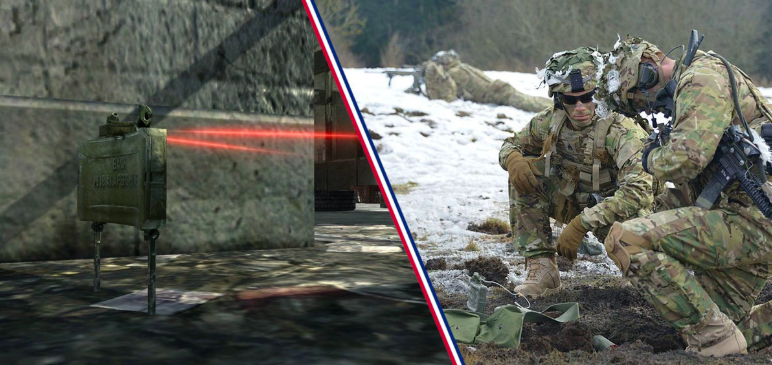Obviously, video games are nothing like the real world. No one is going to give you 100 gold coins to go clear a bunch of rats out of a dungeon and no one is impressed by your ability to roll on the ground to get places faster.
Where this division between real life and gaming hits the hardest is in the military. Think about it — not once has a recruiter tried to tell you about the “quest reward” that is the GI Bill. On the bright side, there are a lot less people screaming that they’ve done unspeakable acts to others’ mothers — so there’s that.
These are six video game tropes that are completely detached from reality.
1. First-aid kits
Most games have one of two types of healing: Either you just hide behind a rock for a few seconds and you’re perfect or you run over a first-aid kit and it immediately feel better You might be surprised to learn that this isn’t how it works on an actual battlefield.
There are entire occupations in the military dedicated to delivering aid to wounded troops. The cold reality is that just throwing a first aid kit at someone isn’t going to get them back to 100%.

Usually, waiting for your vision to stop going red indicates a concussion…
(Bungie)
2. Claymore mines
For some reason, claymore mines in video games are always set to go off when someone walks in front of the little lasers attached to the front.
In real life, mines like those do exist, but they aren’t used on the battlefield. Laser tripwire mines are highly discouraged by the Geneva convention. Typically, real claymore mines are detonated with a wire and switch.

It’s probably for the best. A laser could get set off by anyone: friend, foe, or civilian bystander.
(Ubisoft)
3. Perfectly working weapons
No matter what wide assortment of weapons and firearms the game presents to the player, every weapon will always work perfectly. You never have to clean them, maintain them, or deal with many of the issues that plague actual weapons.
Cleaning weapons is a daily routine for combat arms troops. But even if the weapon is at peak cleanliness, they may still suffer a failure to feed, load, or eject, which takes a troop out of the fight temporarily. It’d be nice for immersion if the gamer had to perform SPORTS on a disabled rifle, but it definitely wouldn’t be any fun.

Even in the apocalypse, any weapon you find works perfectly.
(Bethesda Game Studios)
4. Operation Orders
In a sense, there are briefings in video games. While the mission loads up, players are told what to do and then sent off to play. If they don’t like a mission, they can usually just skip it — or disregard orders and play it however they see fit.
Declining a mission from someone who outranks you or putting your own “creative twist” on an objective to it is a surefire way to incur administrative action — especially if your idiotic move has terrible consequences for someone else.

Older games tended to be a lot more straightforward with their orders.
(Data East)
5. “Running and gunning”
In multiplayer games, when a match starts, players set out with a singular objective of outscoring the other guys. This means that everyone plays the fun role of the badass who runs around the map shooting fools in the face.
Actual missions are set up differently and broken down into many different tasks. Your security element is often away from the fight and watching what the enemy is up to, the support element makes sure things go according to plan, and even the assault teams you’d expect to be doing the badass stuff often are given a single task like, “just watch this one particular window.”

It’s also much harder to do a 360 No-Scope in real life, so don’t try it at home, kids.
6. Fair fights
Video games try to give everyone an equal and competitive chance at winning. Developers spend months fine tuning a game before launching it to make sure every player is given the same chance as the next. In a perfect, competitive environment, the only variable is skill.
There’s no way in Hell that U.S. troops would willingly fight on the same level as their enemy. Sure, there’s always going to be that one tool who complains about the Geneva Convention “holding us back,” but in the grander scheme of things, it really doesn’t. U.S. troops kick an unbelievable amount of ass — and they do so with bigger guns, better technology, and more rigorous training.

Thankfully, helicopter pilots don’t give a damn if you’ve gone on a 7-kill streak or not.
(Activision)
This article originally appeared on We Are The Mighty
More From We Are The Mighty
5 Reasons Why Troops Stick Together After the Military
4 Reasons Why Showering On Deployment is Disgusting
7 of the Greatest Songs Every Veteran Knows
6 Things You’d Take Back Before Leaving the Military
6 Dumb Things Veterans Lie About on the Internet
Follow We Are The Mighty on Twitter
READ NEXT: 7 OLD MILITARY JOBS WE’D LOVE TO SEE COME BACK











